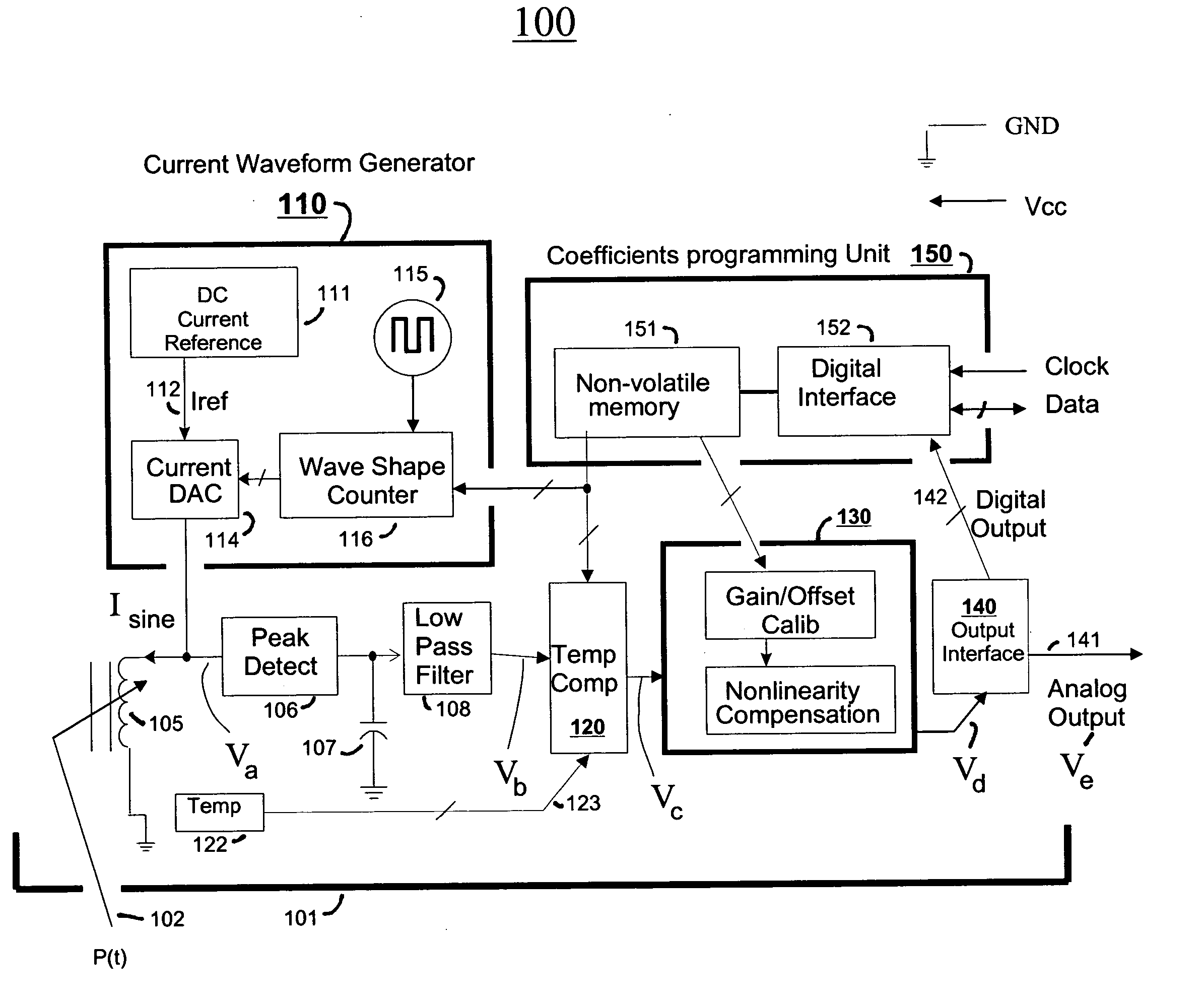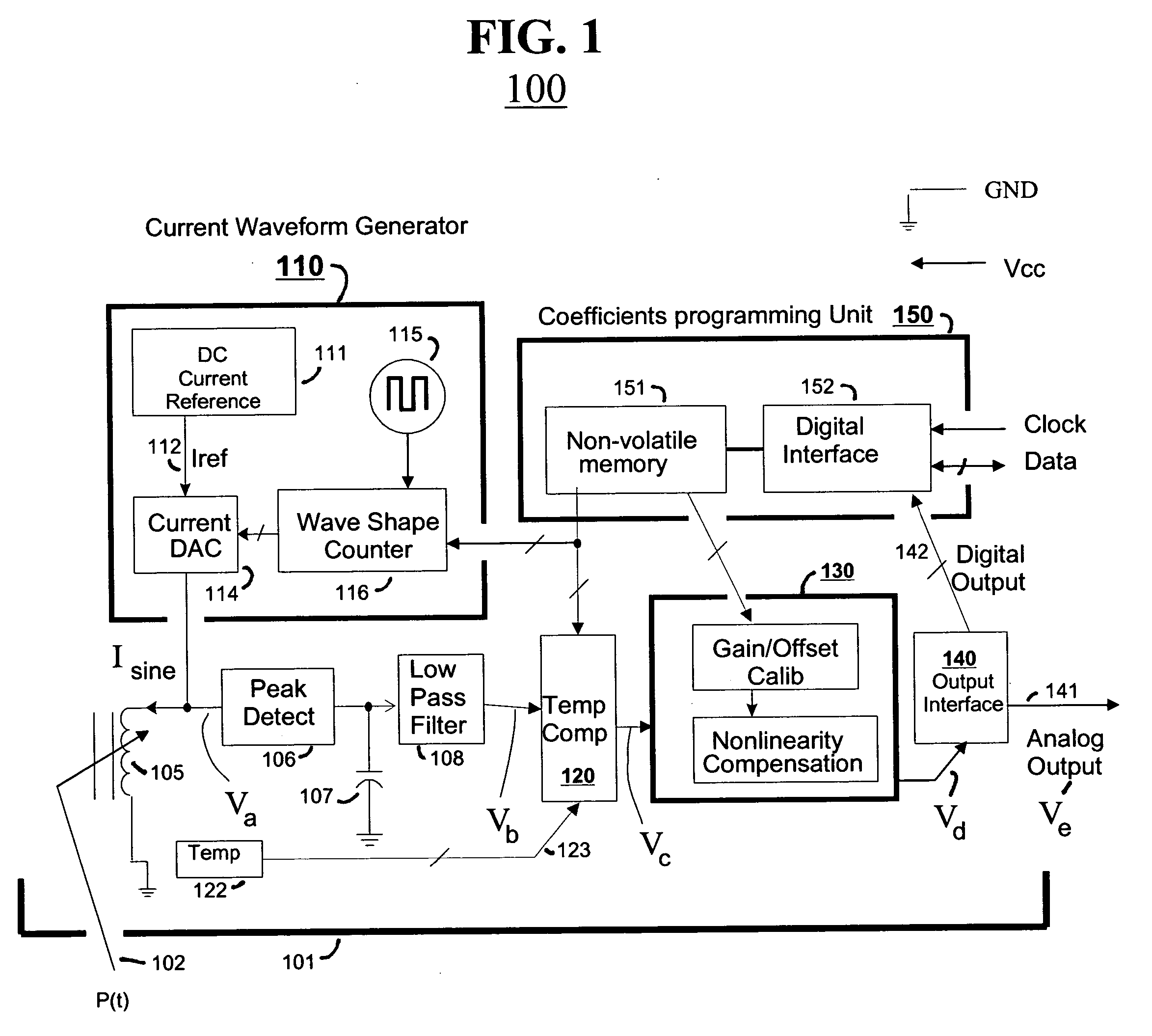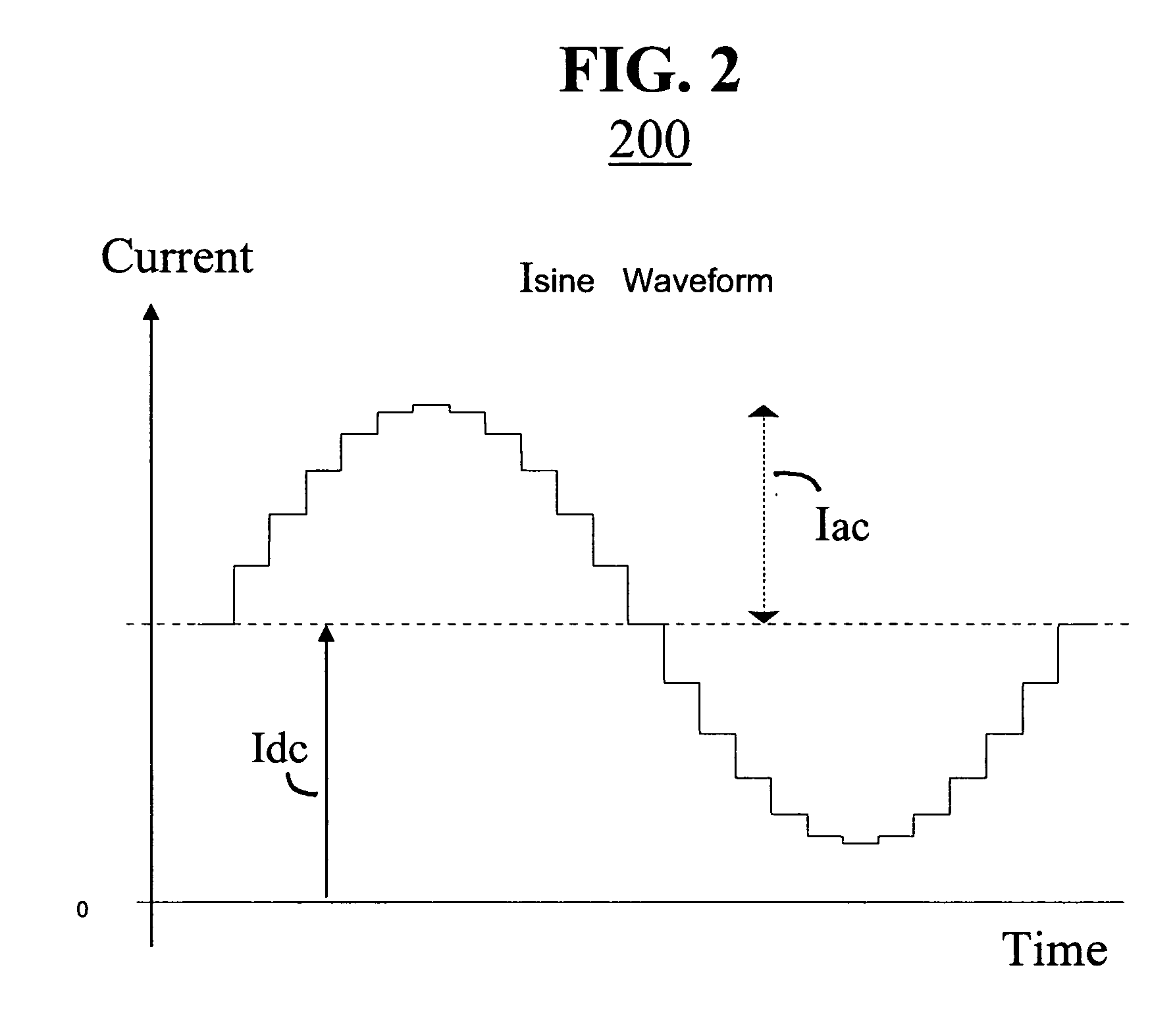Reactive sensor modules using pade' approximant based compensation and providing module-sourced excitation
a sensor module and approximant-based compensation technology, applied in the field of electronic systems, can solve the problems of presenting unique requirements and limitations, affecting the accuracy of the measurement of the under-measured physical parameter, and affecting the accuracy of the measurement. , to achieve the effect of high accuracy, low cost and simple and low cos
- Summary
- Abstract
- Description
- Claims
- Application Information
AI Technical Summary
Benefits of technology
Problems solved by technology
Method used
Image
Examples
Embodiment Construction
[0087] The following description is illustrative only and not limiting. Referring to FIG. 1, a block diagram is provided of a sensor module 100 including a variable reluctance sensor 105. In one embodiment, the module comprises a printed circuit board (not shown) to which are mounted a sensor coil, a monolithic integrated circuit (IC, not separately shown) and an oscillator crystal. The printed circuit board is surrounded by a protective housing 101 (partially shown) such as a hermetically sealed, non-magnetic metal casing (e.g., aluminum). The coil is positioned near a wall of the protective housing 101 so as to interact with an external and movable, magnetic core member 102. An external physical parameter, P(t), such as a position of the movable, magnetic core member 102, alters the reluctance of the so-formed sensor 105.
[0088] A current generator 110 is provided within the IC for driving a periodic current signal, Isine through the variable reluctance sensor 105, where Isine is d...
PUM
 Login to View More
Login to View More Abstract
Description
Claims
Application Information
 Login to View More
Login to View More - R&D
- Intellectual Property
- Life Sciences
- Materials
- Tech Scout
- Unparalleled Data Quality
- Higher Quality Content
- 60% Fewer Hallucinations
Browse by: Latest US Patents, China's latest patents, Technical Efficacy Thesaurus, Application Domain, Technology Topic, Popular Technical Reports.
© 2025 PatSnap. All rights reserved.Legal|Privacy policy|Modern Slavery Act Transparency Statement|Sitemap|About US| Contact US: help@patsnap.com



